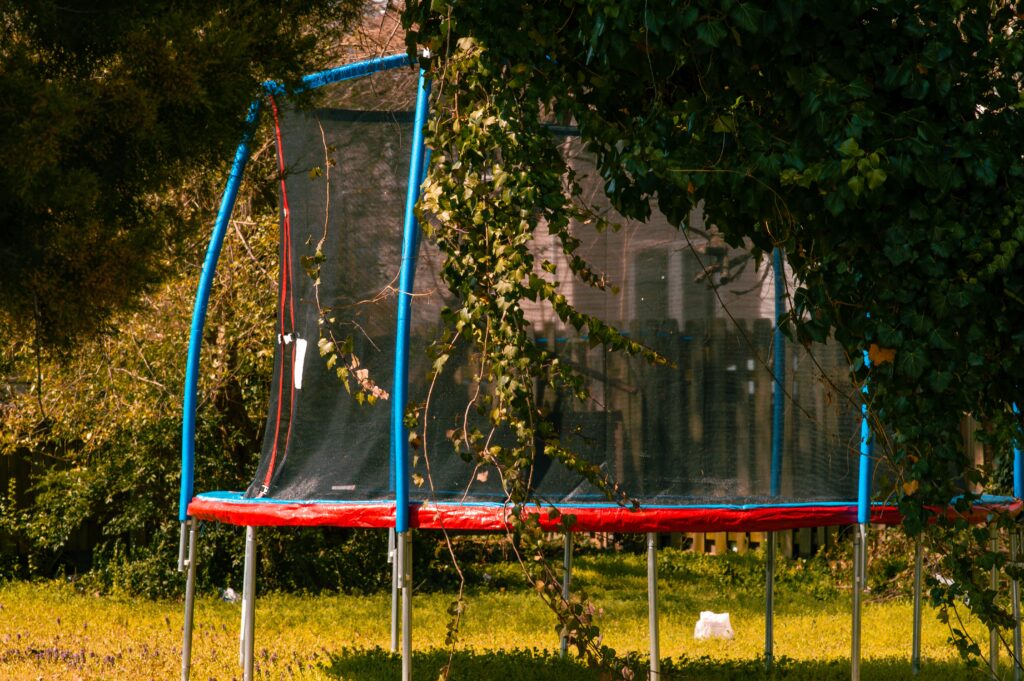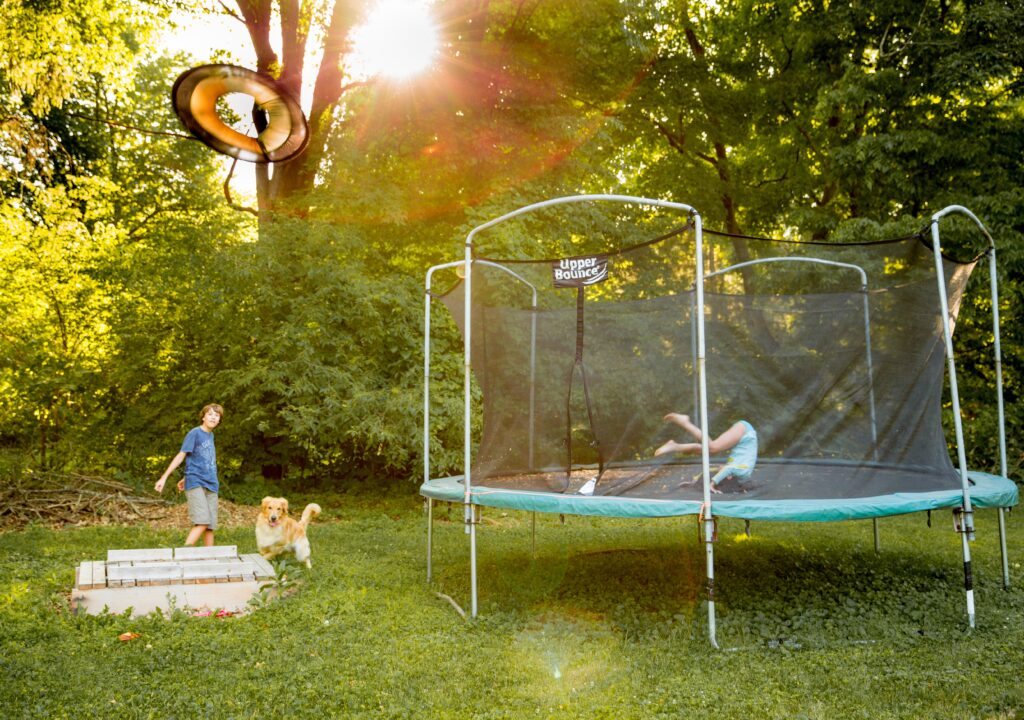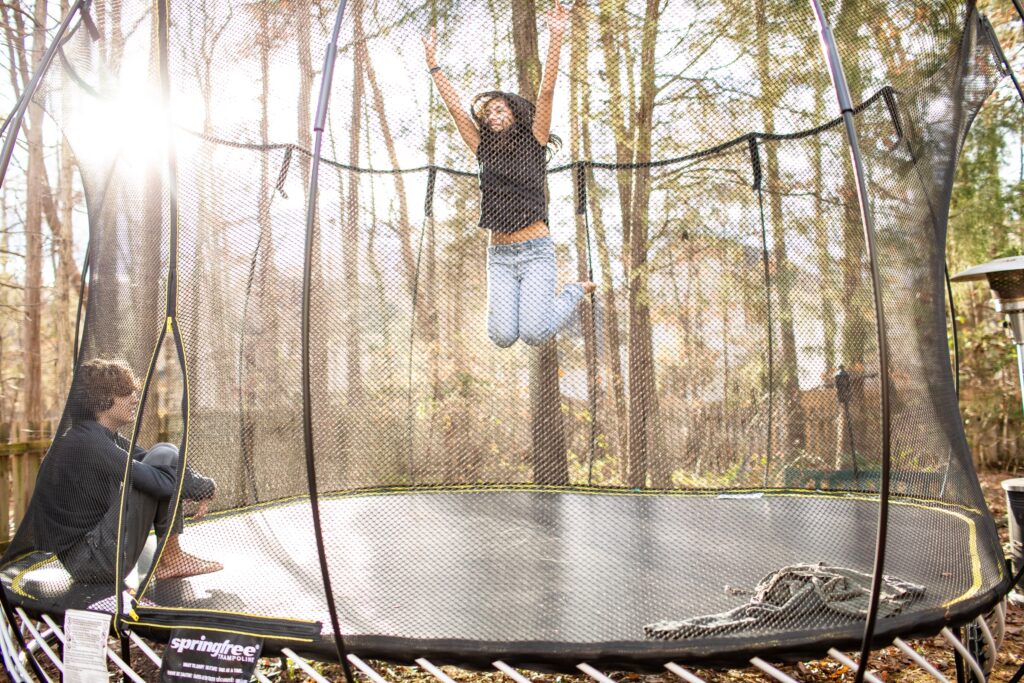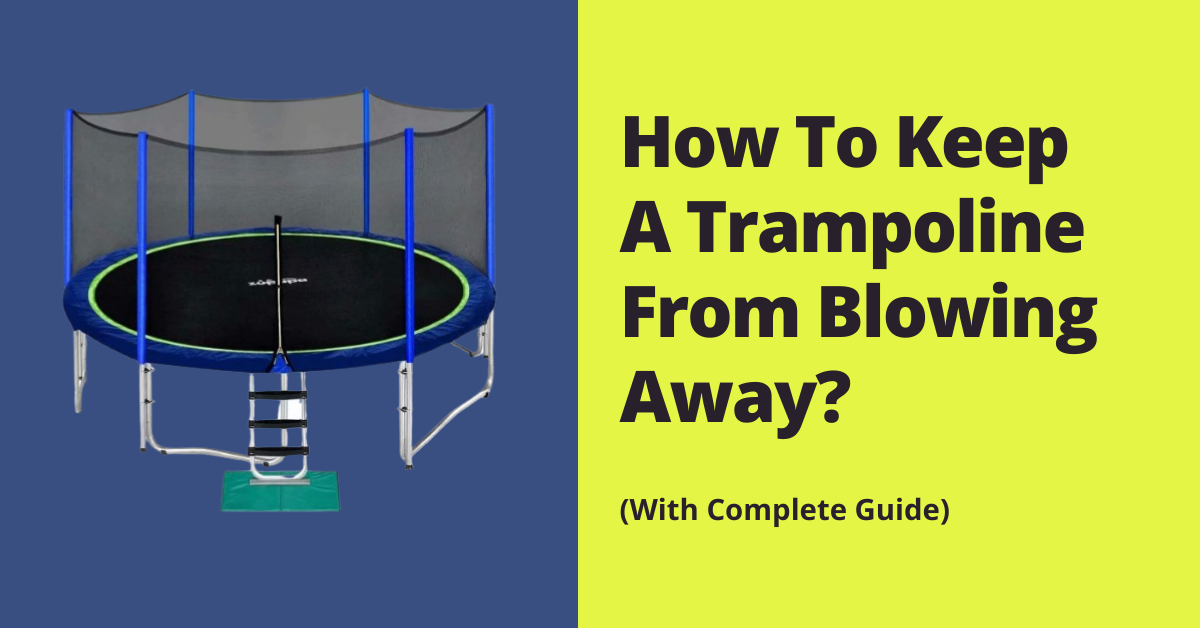How To Keep A Trampoline From Blowing Away: 4 Easy Methods
A trampoline is a fun way to have some exercise. For those unfamiliar with them, trampolines are large square cages filled with square springs. People jump around on the trampoline springs to help maintain their health. Sometimes, people even buy them for children as toys or play equipment.

However, sometimes the wind blows them around. This can be dangerous for anyone on the trampoline, especially young children who might not be able to get off quickly. There are many ways if you want to learn how to keep a trampoline from blowing away.
What Makes Trampoline Blow Away?
This is a question that requires some analysis. There are many factors that can cause a trampoline to blow away in the wind.
First, large trampolines are just plain big. They are heavier than most people think they are. A typical 8-foot diameter trampoline can weigh up to 200 pounds when filled with water. If you have children using the trampoline, there will be more weight added to their bouncing. This makes it even more challenging to handle.

Second, trampoline springs are made of metal. They naturally have the ability to stick together when they are compressed with force. The wind can easily pull them apart when nothing is holding them down or together.
Third, trampolines usually are placed outdoors in backyards where there is a lot of space for them to blow around. With some winds, they will become difficult to control without the help of something extra.
Checkout to learn How To Level A Trampoline?
How to Keep a Trampoline from Blowing Away? [4 Main Ways]
There are four main ways to keep a trampoline from blowing away in the wind. These are what most people usually think of when trying to solve this problem.
Place a Weight on the Trampoline:
You can anchor a trampoline down with a weight placed on the legs. This will help hold it in place and keep it from going anywhere when there is wind. However, this weight must be equal to or greater than the total weight of your trampoline and what you have on it. If it is too light, then the weight will not hold it down because there is nothing to keep the legs compressed together under pressure.
Traditionally, people use their car to hold down a trampoline during lousy weather. However, this can be dangerous if the wind becomes strong enough to pick up your vehicle or if it slides during the storm.

Another way to anchor a trampoline down is with a set of weights and stakes placed on the legs and around the frame. They help hold everything in place and prevent movement or shifting that will cause an accident. You can use heavy-duty tent stakes, several cinder blocks, or anything else that you have that is heavy and large enough to hold the trampoline down.
Anchor the Trampoline to the Ground:
You can use stakes and ropes to tie down a trampoline where it is placed. This will help keep it from getting away in high winds, but you must be sure that you are using ropes with enough length, so they do not snap or break during a storm. You also need to make sure that you are using thick enough strings. If they snap, you might lose control of your trampoline, and the stakes will not be able to hold it down on their own.
Another option is to get a heavy-duty metal frame anchored into the ground with concrete. Once again, this will work well as long as you use very secure materials to fix it into place.
There are many other ways to anchor a trampoline down, but they are not as reliable. You still need to be careful even if you have fixed the trampoline to one spot in the yard because it could become too dangerous for anyone using it during windy conditions.
Trampoline Anchor Kit:
Anchoring a trampoline down can be difficult, especially with a larger model. The trampoline anchor kit was created to secure their trampolines using suitable materials and equipment. This eliminates guesswork and trial and error when it comes to anchoring your trampoline down.
The heavy-duty straps that come with this kit are approximately 10 feet long. You can use them to wrap around the legs and frame of your trampoline, where they join together at 90-degree angles. This will help keep it in place and make it much more difficult for high winds to lift it.
These straps also come attached to a steel stake inserted into the ground. This will help prevent your trampoline from getting away during a storm, and it provides enough weight to keep it down even in heavy winds that could carry other items away.
Cover the Trampoline when it is not in use:
You can also cover your trampoline when you are not using it. This will make it heavier and harder for the wind to blow around. While this may work in some cases, you need to make sure that there is enough weight on top of the trampoline so that the stakes can keep it in place. You cannot rely on this method to keep the trampoline down during a storm, but it will be better for keeping it safe during normal weather conditions.
Another option is to get a rain tarp that you can use to cover the entire trampoline when there is no one using it. This will help prevent damage from UV rays and other environmental conditions, but it is an expensive option that not everyone wants to consider.
How Much Wind Can a Trampoline Handle?
A trampoline is designed to be safe in average weather conditions because it has been tested for its weight restrictions, but it can become dangerous when the wind picks up and becomes extremely strong. When the trampoline is being pushed in a specific direction by high winds, someone jumping on top of it can cause a hazardous situation.
The weight on a trampoline also impacts the bounce that takes place when someone jumps on it. If there is not enough weight, the springs will not be stiff enough to provide a solid support base. This can mean that the person’s feet or head may slam into the side of the trampoline and cause them to roll off of it.
The stronger the wind gets and the more weight on top of a trampoline, the more potential there is for things to go wrong. You have no control over what happens beyond your home or property line, so you should do everything you can to prevent any problems with your trampoline.
When the weather changes and the wind picks up, you need to bring your trampoline in and put it inside a secure location to protect it from high winds and other dangerous conditions. This will ensure that everything stays safe while you are not home and let you keep enjoying your trampoline for years to come.
Frequently Asked Questions
Conclusion
Trampolines can be helpful if you take the time to anchor them down so they will not get blown away. A trampoline anchor kit is a good option because it was made specifically for this purpose and works well under any weather conditions. It provides you with complete control over where your trampoline is set up, and the straps are made from durable materials that will last for a long time.
We hope this article about how to keep a trampoline from blowing away has provided you with helpful information that will inspire you to take action. Be sure to check out our other articles if you are looking for more tips and tricks about trampolines or jumping on a trampoline.
Read More:
How Much Weight Can A Trampoline Hold?
